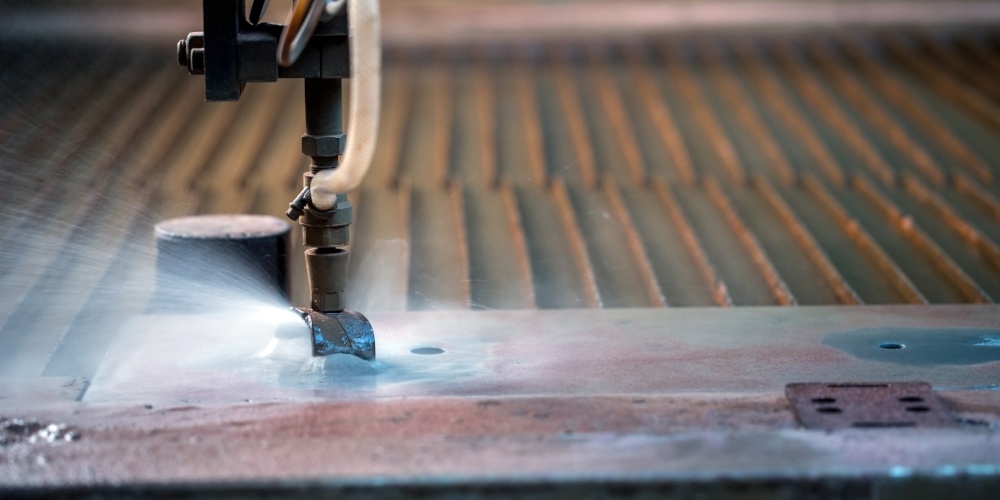Parts that are subject to high-stress cyclic loads often suffer from metal fatigue, which reduces their life and causes them to fail. In some cases, the surface produced by waterjet cutting could contribute to fatigue; however, there are ways how to minimise impact and increase resistance. Properly designing parts, using the optimal cutting quality for the part and choosing the best finishing process are all ways that can increase the fatigue resistance of your parts significantly.
In this article we look at what fatigue is and what causes it, as well as provide guidance on how its effects can be reduced, so that your parts not only achieve, but also extend, their operating lives.
What is fatigue?
Fatigue is a term used to describe the failure mechanism of metals that are subjected to cyclical stress. The stress tends to cause very small cracks to form, which will then continue growing, resulting in large cracks, which will weaken the structure so much that a sudden failure will occur, causing disruption to your processes.
The number of cycles required for failure are determined by how close the cyclical stress is to the ultimate strength of the material.
What factors contribute to fatigue?
There are a number of factors that can contribute to fatigue in waterjet-cut parts, such as geometry, cutting method and finish, among other things. Even small geometry features can cause the stresses to increase around the defect area. Fatigue cracks always begin in areas with the highest level of stress and then extend further depending on the corrosion properties of the environment.
Everything from scratches, sharp indentations and small pieces of dirt or porosity can cause stress concentrations that shorten the fatigue life. The striations on a low-quality waterjet-cut edge can also contribute to increased fatigue.
There are certain industries where the issue of fatigue is more relevant than others, such as the aerospace industry, as well as any other sectors where metals are highly stressed with cyclic loads.
How can we improve the fatigue life of waterjet cut parts?
There are several approaches that can be taken, which have proved to be highly effective in reducing fatigue.
- Design the part in such a way that stresses are minimal
- Avoid sharp corners in tension
- If there’s nothing you can do to avoid the high-stress areas, then use high-quality cutting in those areas to minimise striations
- If the ultimate in fatigue life is required, grit-blast the parts
- Consider the use of autofrettage (a technique originally used to strengthen large gun barrels)
- The most effective way to reduce fatigue and increase component life is to simply operate the system at lower pressure
- With greater flow rate, as opposed to greater pressure, higher cutting power can still be realised without the drawback of decreased component fatigue life
Unexpected downtime is one of the most detrimental consequences of fatigue, as it will result in production loss and costly repairs. The best way to fight this is by working with an experienced waterjet supplier that will ensure the fatigue life of your parts is optimised and you’re only delivered waterjet cutting services of the highest level of quality.
Here at ICEE we have stringent inspection procedures in place to ensure your parts are profiled to the highest standards and scrap is brought to an absolute minimum.
If you’re unsure whether waterjet cutting is the right method for you or simply want to find out more, download our free and comprehensive eBook ‘An engineer’s guide to waterjet cutting’.

